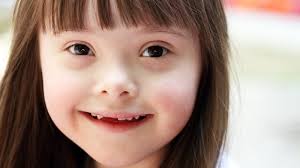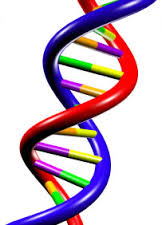Lesson 1: Predisposition, Biological Factors, and the Brain
Chromosomal Abnormalities
Major difficulties arise if not exactly 23 pairs are present in the offspring. Down syndrome, for example,  results when a trisomy (three not two) of chromosome pair 21 occurs. Problems also occur if one chromosome from a pair is missing. Turner syndrome, for instance, is a condition in the sex chromosomes where a female has only one X (monosomy). When a scientist takes a sample of a person’s chromosomes and arranges them into pairs, the arrangement is called a karyotype. In a karyotype, any chromosomal anomalies may then be seen. Please see Figure 3-1 for an example of a karyotype.
results when a trisomy (three not two) of chromosome pair 21 occurs. Problems also occur if one chromosome from a pair is missing. Turner syndrome, for instance, is a condition in the sex chromosomes where a female has only one X (monosomy). When a scientist takes a sample of a person’s chromosomes and arranges them into pairs, the arrangement is called a karyotype. In a karyotype, any chromosomal anomalies may then be seen. Please see Figure 3-1 for an example of a karyotype.
Please click on the web site below to learn more about chromosome abnormalities and Down syndrome.
| https://www.stanfordchildrens.org/en/topic/default?id=types-of-chromosome-abnormalities-90-P02158 |
The following karyotype shows the 23 sets of chromosomes. Notice the trisomy in pair 18. This trisomy is called Edwards syndrome, which results in severe heart malformations. Also notice the monosomy of chromosome 23. This female has Turner syndrome. Extreme chromosomal abnormalities often result in spontaneous abortions or stillbirths.
Figure 3-1: Karyotype for Turner and Edwards Syndrome
Learn more about Turner's syndrome by watching this short video:
Edwards Syndrome:
Klinefelter Syndrome
For characteristics of various chromosomal anomalies, please see Table 3.2.
Table 3.2: Chromosomal Anomalies
|
Pair |
Number of Chromosomes | Characteristics of Affected Individual |
| 13 | 3 | This fatal condition is associated with major brain abnormalities. |
| 18 | 3 | Edwards Syndrome: This fatal condition is associated with severe heart malformations. |
| 21 | 3 | Down Syndrome: This condition results in mental retardation or handicap; individuals may have slanted eyes and a flattened face. |
| 23 | 3 | Klinefelter Syndrome: Males have one Y and two X chromosomes. They have underdeveloped testicles and a lack of body hair. One of five may have a mental handicap. |
| 23 | 1 | Turner Syndrome: Females have only one X chromosome. They are generally short, have webbed necks, and have underdeveloped ovaries. |
Table 5.2: The Gene Pool (Jeff Holubitsky, 1996)

• Children inherit 50 percent of their genes from each immediate biological parent, 25 percent from each grandparent and so on down the line.
• In the long run, siblings are likely to share about half of this genetic information, but it could be more or it could be less.
• Twin studies have shown that although twins are called identical, they rarely are.
• Most experts in behaviour genetics believe that most human characteristics are determined by both the genetic inheritance and the life experience of the individual.
• There are about 30,000 genes that are distinct proteins in the brain and 20,000 are specific to the brain.
• Because of all the combinations and cross-overs in the chromosomes, parents could theoretically produce thousands of children and no two would be genetically identical.
• Many conditions such as cystic fibrosis, Huntington’s Chorea, and Tourette syndrome appear to have genetic links. Once a disease is determined to have a genetic cause, that information can lead to treatment. Currently, the genes can’t be changed, but the genes aren’t causing the consequences – proteins, enzymes and cells do, and they can be altered.
• Researchers also suspect some broader conditions such as dyslexia may have a genetic origin. If that’s the case, early diagnosis could lead to more effective teaching methods for these children.
• Genetic researchers are examining schizophrenia and depression, but these conditions are difficult to clinically define, unlike specific physical ailments.
• A minority of Alzheimer’s cases appear to be associated with a defective gene, however, most cases don’t appear to have a genetic cause.